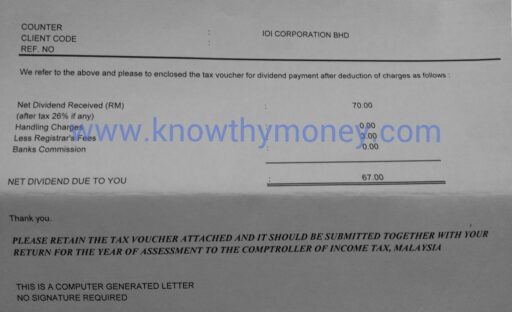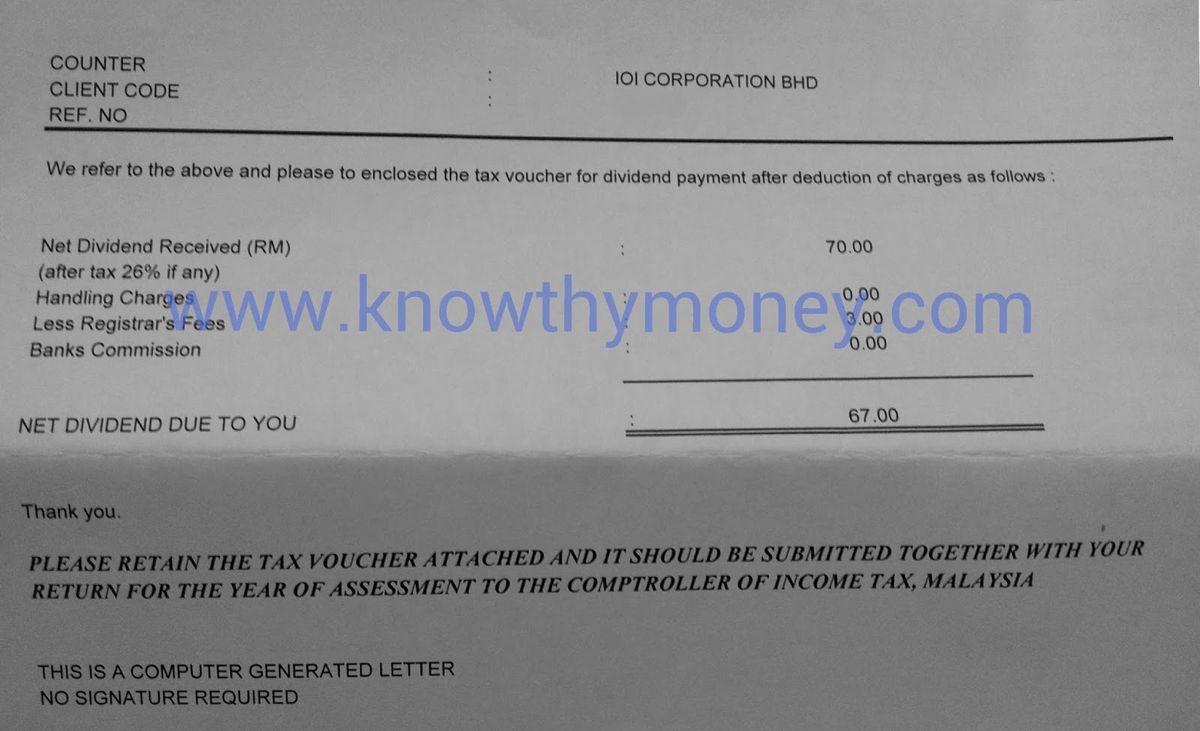In a financial landscape where stability and consistent income are highly valued, dividend stocks stand out as a beacon for investors. As we delve into 2023, it’s crucial to identify the top dividend stocks that not only provide attractive yields but also maintain sustainability and resilience against market fluctuations. This article will guide you through understanding dividend stocks, spotlight top picks across various sectors, explore dividend-focused ETFs, and offer strategies for building a robust dividend portfolio. Additionally, we’ll share expert insights and tools to enhance your dividend investing journey.
Key Takeaways
- Dividend stocks are integral for income maximization, offering both yield and potential for capital appreciation.
- Technology, financial, and energy sectors are presenting strong dividend-paying stocks in 2023, with companies like 3M and Verizon being notable mentions.
- Low-cost dividend ETFs like the Invesco Dow Jones Industrial Average Dividend ETF offer a diversified approach to dividend investing with manageable expense ratios.
- Investors should consider using financial tools and resources for effective dividend tracking, and stay informed through analyst recommendations and community discussions.
- Building a diversified dividend portfolio can benefit from strategies like balancing high-yield stocks with growth potential and utilizing Dividend Reinvestment Plans (DRIPs).
Understanding Dividend Stocks and Their Role in Income Maximization


The Importance of Dividend Yields
Dividend yield is a critical metric for income-focused investors, representing the annual dividend payment as a percentage of the stock’s current price. It serves as a benchmark for the income-generating potential of an investment relative to its market value. High dividend yields can be attractive, but they must be weighed against the company’s ability to sustain payments.
Dividend yields offer a snapshot of income return on investment, but they are not the sole indicator of a stock’s value or future performance.
Understanding the nuances of dividend yields involves considering several factors:
- Dividend consistency: Regular and increasing dividends over time suggest financial health.
- Earnings stability: Positive earnings for an extended period indicate a sustainable dividend.
- Growth prospects: Expected earnings growth supports the potential for future dividend increases.
By focusing on stocks with a history of sustained dividend increases and positive earnings, investors can better gauge the reliability of dividend yields. A balanced approach, considering both yield and growth, is essential for maximizing income while mitigating risk.
Assessing Dividend Sustainability
When considering dividend stocks for long-term income, assessing dividend sustainability is crucial. A sustainable dividend payout ratio is a key indicator of a company’s ability to maintain and potentially increase its dividends over time. Look for companies with a consistent history of dividend growth and a payout ratio that does not jeopardize their financial health.
Factors to consider include:
- Long-term dividend increases: A history of at least 10 years of consecutive dividend growth.
- Annual dividend growth: An average increase of at least 7% over the last five years.
- Earnings growth: Positive earnings per share (EPS) growth, averaging more than 8% annually over the past five years.
- Profitability: No unprofitable years in the last six.
It’s not just about the current dividend yield; the overall financial strength and growth prospects of a company are indicative of dividend sustainability. A stock that shows steady EPS and revenue growth, coupled with a durable competitive advantage, is more likely to sustain its dividends.
While high yields are attractive, they should be balanced with the company’s growth potential. Analysts’ expectations of EPS growth, such as a projected 15% annual increase, can signal a company’s capacity for future dividend hikes.
The Impact of Market Conditions on Dividend Stocks
Market conditions play a pivotal role in the performance of dividend stocks. Economic downturns, interest rate changes, and sector-specific issues can all influence a company’s ability to maintain or increase its dividends. Investors should be mindful of these factors when evaluating potential dividend-paying stocks.
- Economic downturns can lead to reduced corporate earnings, potentially impacting dividend payouts.
- Interest rate hikes often make bonds more attractive, which can lead to a shift away from dividend stocks.
- Sector-specific events, such as regulatory changes or commodity price fluctuations, can affect certain industries more than others.
It’s crucial for investors to not only look at a stock’s current dividend yield but also to assess the company’s financial health and the broader market environment. A high yield may be enticing, but it’s sustainability in various market conditions that truly matters for long-term income maximization.
Top Dividend Stocks to Consider for Your Portfolio in 2023


Technology Sector Standouts
In the realm of dividend stocks, the technology sector has emerged as a surprising yet formidable player. The Top 2 Dividend Payers From 2023 Were Both Tech Giants, with Microsoft and Apple leading the charge. Despite what may appear as modest yields, these companies have demonstrated a commitment to returning value to shareholders, each disbursing over $15 billion in dividends last year.
While the tech industry is often associated with growth rather than income, certain established companies have begun to reward investors with consistent dividends. This shift reflects a maturation within the sector, where cash-rich companies can afford to provide regular payouts alongside their continued innovation and expansion.
The convergence of growth and income in tech stocks presents a unique opportunity for investors seeking to maximize their portfolio’s potential.
When considering tech stocks for dividend income, it’s crucial to assess not just the yield, but also the sustainability of the payouts. Factors such as free cash flow, earnings stability, and payout ratios offer insights into a company’s ability to maintain and potentially increase its dividends over time.
Financial Sector Favorites
When considering dividend stocks within the financial sector, investors should look for institutions with a strong track record of profitability and consistent dividend payments. Banks and insurance companies often feature prominently in dividend-focused portfolios due to their ability to generate steady income streams.
- JPMorgan Chase & Co. (JPM)
- Wells Fargo & Co. (WFC)
- Goldman Sachs Group Inc. (GS)
These companies have historically offered attractive dividend yields and have policies in place aimed at returning capital to shareholders. It’s crucial to analyze the financial health of these institutions, including their earnings reports and payout ratios, to ensure that dividends are sustainable over the long term.
While past performance is not indicative of future results, the financial sector has been known to provide some stability in dividend payouts, which can be particularly appealing during volatile market periods.
Energy Sector Picks with High Yields
In the realm of energy stocks, certain names stand out for their robust dividend yields, making them attractive for income-focused investors. Brookfield Renewable emerges as a compelling choice, with a current yield of 6.3% and a reputation for dividend stability and growth potential. Similarly, Enterprise Products Partners, with its 7% yield, epitomizes the appeal of steady, high-yield investments in the energy sector.
Another notable mention is Oneok, which not only offers a 5% yield but also anticipates dividend growth of 3% to 4% annually. These companies are not just offering attractive yields but also demonstrate a commitment to maintaining and potentially increasing their dividends over time.
The energy sector provides a spectrum of dividend yields, with some reaching over 8%, significantly surpassing the average yield of the broader market.
Investors seeking to capitalize on energy dividends should consider the following table, which outlines key data for top-performing energy stocks:
| Company | Current Yield | Market Cap | Growth Outlook |
|---|---|---|---|
| Brookfield Renewable | 6.3% | – | Positive |
| Enterprise Products Partners | 7% | $65B | Stable |
| Oneok | 5% | – | 3-4% Annually |
It’s essential to conduct thorough research and consider market conditions when selecting energy stocks for their dividend potential. The right picks can serve as a cornerstone for a diversified, income-generating portfolio.
Exchange-Traded Funds (ETFs) with Attractive Dividends


Best Low-Cost Dividend ETFs
When it comes to enhancing your portfolio with dividend-paying assets, low-cost dividend ETFs offer a compelling option. These funds provide a diversified collection of dividend stocks while maintaining minimal expense ratios, ensuring that more of your investment goes towards generating income rather than covering fees.
For investors seeking a balance between yield and cost, the Invesco S&P 500 High Dividend Low Volatility ETF (SPHD) stands out. With a dividend yield of 4.4% and an expense ratio of just 0.30%, it’s a prime example of cost-efficient income generation. The fund pays dividends monthly and manages assets worth $2.9 billion, with top holdings including Altria Group and AT&T.
In the realm of dividend ETFs, the Invesco Dow Jones Industrial Average Dividend ETF (DJD) is another notable contender. Despite a lower dividend yield of 3.8%, its exceptionally low expense ratio of 0.07% makes it an attractive choice for cost-conscious investors.
Remember, while the allure of dividends is strong, it’s crucial to consider the impact of fees on your returns. As highlighted by experts, funds with lower fees can significantly enhance long-term gains, aligning with a strategic dividend income approach.
Overall Top Performing Dividend ETFs
When it comes to dividend ETFs, performance is key. Investors often seek funds that not only provide attractive yields but also demonstrate a history of strong total returns. The SPDR Portfolio S&P 500 High Dividend ETF (SPYD) stands out with a compelling dividend yield of 4.6% and a low expense ratio, making it a top contender for those looking to maximize their income.
Dividend ETFs offer a blend of income and convenience, allowing investors to access a diversified portfolio of dividend-paying stocks with ease. They are a practical choice for those who prefer a hands-off approach to income investing.
Another notable ETF is the ProShares S&P 500 Dividend Aristocrats ETF (NOBL), which focuses on companies with a consistent history of increasing dividends. With a dividend yield of 2.4% and quarterly distributions, NOBL is designed for investors seeking steady growth.
Here’s a quick look at some of the top performers:
| ETF Name | Dividend Yield | Expense Ratio | Frequency |
|---|---|---|---|
| SPYD | 4.6% | 0.07% | Quarterly |
| NOBL | 2.4% | 0.35% | Quarterly |
| SPHD | 4.4% | 0.30% | Monthly |
Sector-Specific Dividend ETFs Worth Watching
When diversifying your portfolio with dividend ETFs, it’s crucial to consider sector-specific options that cater to different investment strategies. Some ETFs prioritize yield, while others focus on the growth of dividend payments, offering a blend of stability and potential for income growth.
For investors seeking targeted exposure, sector-specific dividend ETFs can be a strategic choice. These funds allow you to tap into the dividend potential of particular industries, such as healthcare, real estate, or technology, which may have different risk and return profiles.
Fees are a critical factor to consider when selecting dividend ETFs. High fees can significantly erode your dividend income, so it’s essential to opt for funds with low expense ratios to maximize your returns.
Lastly, it’s worth noting the convenience and cost-effectiveness of dividend ETFs. They provide a diversified portfolio of dividend-paying stocks with the ease of trading on stock exchanges and typically lower expense ratios than actively managed mutual funds.
Strategies for Building a Diversified Dividend Portfolio


Balancing High-Yield and Growth in Dividends
When constructing a dividend portfolio, investors often face the challenge of balancing high-yield stocks with those offering growth potential. High-yield dividends can provide immediate income, but it’s the growth in dividends over time that can contribute to substantial wealth accumulation. To achieve this balance, consider the following criteria for stock selection:
- No unprofitable years, ensuring consistent earnings.
- A current dividend yield of at least 1%, indicating immediate income potential.
- A shareholder yield, which includes dividends and share buybacks, of at least 1%.
- An expectation of earnings per share (EPS) growth of at least 8% per year over the next five years, signaling potential for dividend increases.
Dividends are a key component of investor income, but they should not be the sole focus. A company’s financial strength and growth are essential for sustaining and increasing dividends. Look for stocks with a history of steady and rising dividends, even during economic downturns.
Remember, while a high current dividend yield is attractive, it’s equally important to select companies that have demonstrated a commitment to growing their dividends. This often reflects a stable and expanding business, which is crucial for long-term dividend reliability.
The Role of Dividend Reinvestment Plans (DRIPs)
Dividend Reinvestment Plans, commonly known as DRIPs, offer a methodical approach to growing your investment over time. By automatically reinvesting dividends into additional shares, investors can harness the power of compounding to increase their holdings without additional outlay. This strategy is particularly effective for those looking to build wealth steadily, as it allows for the accumulation of more shares, which in turn can generate more dividends.
DRIPs can be especially beneficial for long-term investors. The consistent reinvestment acts as a form of dollar-cost averaging, mitigating the impact of market volatility. Over time, this can lead to significant growth in the value of an investment portfolio.
While DRIPs are a powerful tool, they are not without considerations. It’s important to assess the sustainability of a company’s dividend payouts and the potential for capital appreciation. Here’s a quick checklist to guide you:
- Evaluate the dividend history of the company.
- Consider the company’s financial health and future growth prospects.
- Understand the terms of the DRIP, including any fees or restrictions.
- Monitor your investments to ensure they continue to meet your financial goals.
International Dividend Stocks for Global Exposure
Expanding your portfolio to include international dividend stocks can provide a broader base for income generation and potential growth. While prominent US dividend stocks like Johnson & Johnson, Procter & Gamble, and AbbVie are well-known, looking beyond domestic markets can uncover opportunities for enhanced diversification and exposure to different economic cycles.
Investing in international dividend stocks often involves navigating various tax implications and currency risks. However, the potential rewards include access to emerging markets and industries not as prevalent in the US. For instance, the iShares International Select Dividend ETF (IDV) boasts a dividend yield of 6.2% and provides exposure to high-dividend-paying securities from developed international markets.
The strategic inclusion of international dividend stocks in a portfolio can mitigate risks associated with market volatility and sector-specific downturns, while potentially providing a steady stream of income.
When considering international dividend stocks, it’s crucial to assess the political and economic stability of the countries in which you invest, as well as the financial health of the companies offering dividends. A well-rounded approach can lead to a robust portfolio that stands the test of time and market fluctuations.
Expert Insights and Tools for Dividend Investors


Financial Tools and Resources for Dividend Tracking
In the digital age, efficient dividend tracking is crucial for investors seeking to maximize their income through dividend stocks. A variety of financial tools and software have emerged to simplify this process, offering features that range from basic portfolio monitoring to advanced tax reporting. For instance, Sharesight, highlighted in a recent WallStreetZen article, stands out as a comprehensive solution, covering over 40 international exchanges with robust capabilities for both dividend tracking and tax reporting.
When selecting a dividend tracking tool, consider the following aspects:
- Compatibility with your investment platforms
- Range of supported exchanges and securities
- Depth of dividend analysis and reporting features
- Integration with tax preparation software
It’s also wise to be mindful of any associated costs, as subscription fees can vary widely. A well-chosen tool can provide invaluable insights and save considerable time, making it a worthwhile investment for serious dividend investors.
By leveraging the right tools, investors can not only track their dividend income efficiently but also analyze their portfolio’s performance in relation to market conditions, thereby making more informed investment decisions.
Analyst Recommendations and Research Reports
Navigating the sea of dividend stocks can be overwhelming, but analyst recommendations and research reports are invaluable tools for investors. Top Wall Street analysts have highlighted certain stocks that stand out for portfolio income. For instance, companies like Enbridge, Bank of America, and PepsiCo are often favored for their robust dividend yields and strong financial health.
When considering analyst recommendations, it’s crucial to look at the consensus rating and the range of target prices. Here’s a simplified example of how this data might be presented:
| Company | Consensus Rating | Target Price Range |
|---|---|---|
| Enbridge | Buy | $40 – $45 |
| Bank of America | Overweight | $30 – $35 |
| PepsiCo | Hold | $130 – $140 |
Remember, while these insights are helpful, they should not be the sole basis for investment decisions. Diversification and personal financial goals must always be considered.
It’s also beneficial to review the frequency and rationale behind the upgrades and downgrades. This can provide a deeper understanding of market sentiment and potential shifts in company performance.
Webinars and Community Discussions on Dividend Investing
Engaging with a community of like-minded investors and experts can be invaluable for those looking to enhance their dividend investing strategies. Webinars and online forums offer a platform for real-time interaction and knowledge sharing.
- Participate in webinars hosted by industry experts.
- Join online investment communities for peer discussions.
- Share and receive investment ideas and strategies.
- Access a wealth of research reports and market analyses.
Embracing the collective wisdom of a community can lead to more informed investment decisions and a deeper understanding of market trends.
Staying updated with the latest insights and trends in dividend investing is crucial. Regular participation in webinars and community discussions ensures you’re always learning from the successes and challenges of others, keeping your investment approach fresh and responsive.
Conclusion
As we’ve explored the top dividend stocks to watch in 2023, it’s clear that income investing remains a cornerstone for those seeking financial stability and growth. From the technology sector to ETFs with impressive yields, the options are abundant for investors looking to bolster their portfolios with reliable dividend payers. Remember, the key to maximizing your income through dividends lies in diligent research, diversification, and staying informed about market trends. Whether you’re planning for retirement or looking to generate a steady stream of income, these dividend stocks present opportunities that merit attention. As always, consider your individual financial goals and consult with a financial advisor to tailor your investment strategy to your needs. Here’s to a prosperous year of investing!
Frequently Asked Questions
What are dividend stocks and why are they important for income maximization?
Dividend stocks are shares of companies that pay out a portion of their earnings to shareholders regularly. They are important for income maximization because they provide a steady stream of income, which can be particularly attractive to investors looking for consistent returns, such as retirees.
How can I assess the sustainability of a company’s dividend?
To assess the sustainability of a dividend, investors should look at the dividend payout ratio, the company’s earnings stability, its cash flow situation, and the overall financial health of the company. A payout ratio that is too high might not be sustainable in the long term.
What market conditions could affect dividend stocks?
Market conditions that could affect dividend stocks include changes in interest rates, economic downturns, sector-specific issues, and company-specific events. It’s important to monitor these conditions as they can impact a company’s ability to maintain or increase its dividend.
What are some of the top dividend stocks to consider in 2023?
While specific stock recommendations require up-to-date research, sectors to watch for top dividend stocks in 2023 include technology, finance, and energy. Companies with a history of strong dividend payments and those poised for growth in these sectors are often considered.
Are there any ETFs that focus on dividend stocks?
Yes, there are several exchange-traded funds (ETFs) that focus on dividend stocks. These ETFs typically track indexes composed of high-dividend-paying companies and can offer diversified exposure to dividend income. Examples include the Invesco Dow Jones Industrial Average Dividend ETF (DJD) and the ALPS Sector Dividend Dogs ETF (SDOG).
How can I build a diversified dividend portfolio?
To build a diversified dividend portfolio, investors should consider a mix of high-yield dividend stocks and those with potential for growth. Including dividend reinvestment plans (DRIPs), sector diversification, and international dividend stocks can also help in achieving a well-rounded portfolio.





